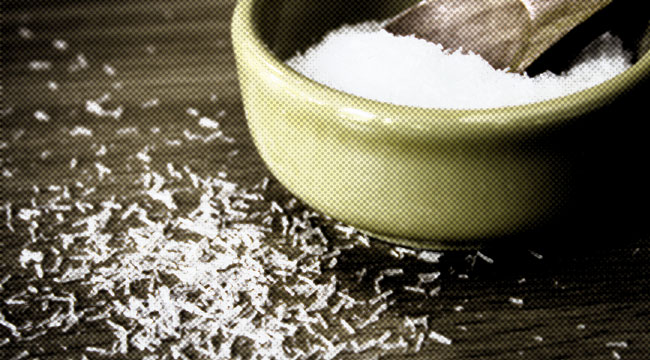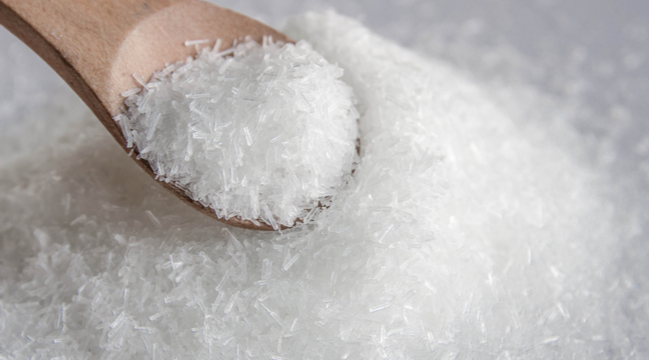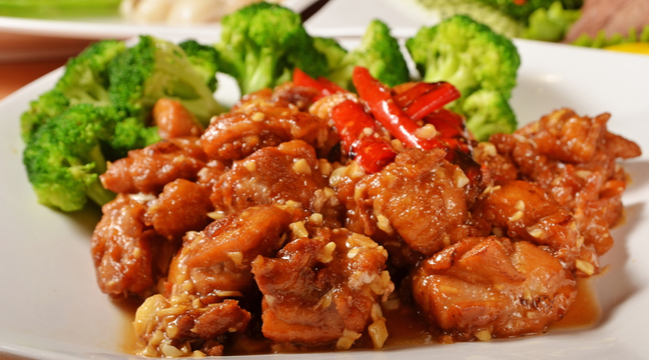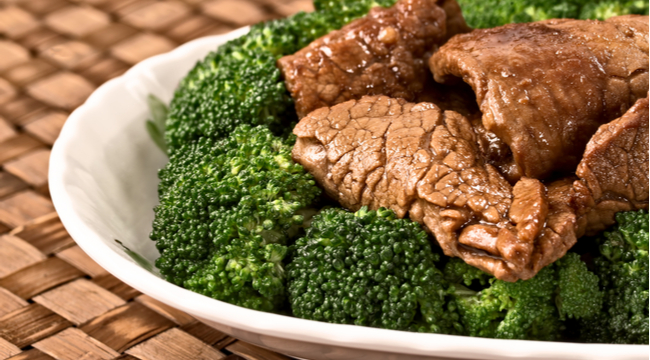
When you eat your way through eastern Asia, as so many food lovers are wont to do, you end up spoiled by dishes that burst with flavor. There’s a depth that seems almost supernatural — the sweet is somehow sweeter, the sour sharper, and the savory, or umami, flavors are far more intense. Then you come home to America with an addiction to those Thai curries from Chang Mai and simple chicken and rice plates from the streets of Singapore and Haikou. Finally, you break down and hit your favorite Thai joint or Hainan chicken spot. Just ordering the plate makes you salivate. But when it arrives and you tuck in… there’s something off. Those intense chicken flavors are missing their edge or that Thai curry is all bark but no bite. It’s still good but it no longer matches the hallowed culinary mountaintops you reached when you were in the east.
You start to look around, hunting for an explanation of why this hip spot seems a little less blissful, when you see it. A plastic sign at the host’s counter: “MSG FREE.” And then you know what’s up.
Because MSG is a flavor flood — so when you don’t have it, it will be missed. The natural flavor enhancer has the ability to make literally anything better. Chicken is more lush. Rice has more depth. Broths become dangerously complex. It makes food taste better than food has any business tasting. And it was crazy popular in the US, until…
In 1968, an anecdotal letter to the New England Journal of Medicine set MSG’s whole world on blast — at least in the west. And we have yet to recover. MSG was branded as an evil chemical that was going to make you sick. This is straight up bullshit for several reasons, primary among them: You almost assuredly eat glutamate (the G in MSG) every single day, multiple times, without either a) realizing it’s in a lot of natural foods and b) it is still used in tons of foods under a different moniker.
This is what MSG is, its story, and why you need to reintroduce it to your seasoning rotation ASAP.
WHAT IS MONOSODIUM GLUTAMATE

As with all great food stories, this one starts with a single meal. Back in 1908, Japanese scientist Kikunae Ikeda was enjoying a bowl of his wife’s soup when he was hit by the depth of flavor she was able to coax from the ingredients. He queried as to what her secret was and she informed him she’d been putting a piece of kombu (dried seaweed) in the dashi broth. Intrigued, Ikeda went to his lab and set about isolating exactly what it was about the seaweed that made his wife’s soup stand out from the usual sweet, sour, bitter, spicy matrix that seemed to dominate food tastes.
Ikeda evaporated a piece of seaweed with a standard chemical called sodium chloride — also known as table salt — until it became crystallized. He dipped his finger into the crystals and tasted them. He was blown away. He’d basically isolated the chemical glutamate and bonded it with sodium. He birthed monosodium glutamate. He called his invention ‘Umami.’
In doing this, Ikeda isolated the fifth, and many would argue most important, taste: Savory. That’s the one that makes Geoffrey Zakarian nod his head on Chopped and say, “you coaxed a lot of depth out of the broth.”
Sodium chloride is salt. We seem to have a pretty good handle on that. Glutamate seems a bit foggier in our grasp on what it is. You can find glutamates — which are chemically identical to the glutamate in MSG — in blue cheese, parmesan cheese, soy sauce, fish sauce, walnuts, anything tomato, grape juice, peas, mushrooms, broccoli, oysters, corn, potatoes, chicken, mackerel, beef, eggs, bovine milk, human milk, and anything made with a yeast extract. Even if you’re a vegan, you’ve had one of those ingredients.
Today MSG is made from beets or corn where the glutamate is isolated with salt, preserving the ‘natural’ aspect of the product. More on that later…
THE CONTROVERSY

In 1968 Dr. Robert Ho Man Kwok wrote a letter to the New England Journal of Medicine (that’s the same publication that back in 1980 thought it was A-okay to publish that opiates are totes not addictive, y’all). Here’s an excerpt from Dr. Ho Man Kwok’s letter.
“I have experienced a strange syndrome whenever I have eaten out in a Chinese restaurant, especially one that served northern Chinese food. The syndrome, which usually begins 15 to 20 minutes after I have eaten the first dish, lasts for about two hours, without hangover effect. The most prominent symptoms are numbness at the back of the neck, gradually radiating to both arms and the back, general weakness and palpitations…”
The term ‘Chinese Food Syndrome’ was born. Nutritionists and scientists rushed out to prove the syndrome true by conducting experiments. Most of the “science” conducted against MSG has largely been discredited as severely flawed. Studies seemed to hover around either injecting newborn mice with ludicrous amounts of MSG to force a physiological issue or telling human test subjects (who claimed to have problems with MSG) they were getting MSG and waiting for a reaction to happen. Which is dubious at best and confirmation bias at worst.
This was compounded by the prospect of manufacturing a hit job on exclusively migrant run food establishments. Sensational books like The Taste That Kills were rushed to press. These bombastic cash grabs were barely even based on pseudo-science, much less anything solid. Newspaper headlines read “Chinese food make you crazy? MSG is No. 1 Suspect” with nothing more than anecdotal accounts of people feeling bad after eating Chinese food. One of the more egregious examples happened in the UK with nutritionist and author Patrick Holford, who claimed that MSG was linked to hyperactivity in children. His evidence? He fed kids some flavored and unflavored potato chips and found the kids who ate the un-flavored chips weren’t as hyperactive afterward. His conclusion? MSG was to blame.
That story got wide coverage and continued the myth that MSG was terrible for your health. The whole thing was shot through with racism and the sadly American fear of the “other.”
THE SCIENCE

Basically, almost every study done with placebos and double blinds have found MSG to be completely safe since the 1970s. The FDA, EU, UN and majority of the universities that study food have deemed it to be a safe food ingredient. In fact, one double blind placebo study that occurred in the 1990s found that only one person reacted badly during their research study. That person came into the program believing they had an MSG intolerance and had a reaction when served the placebo without the MSG but never had a reaction with the MSG-laden dishes. So… yeah.
What’s likely happening here is called the ‘nocebo effect.’ That’s where we have a reaction to something based on public and pop culture indoctrination. Our minds invent symptoms that we have to attribute to an outside source and not our own, well, delusions. So you could be feeling all those bad feeling that Dr. Ho Man Kwok felt. But that has nothing to do with the physical existence of MSG in your body and all to do with your mind being unwaveringly convinced that what’s happening to you is supposed to happen.
Moreover, if MSG, or glutamate, really was causing these problems, then people would have to cut out all glutamate from their diets — which is a massive amount of foods since it’s part of almost all dietary proteins. Science says over and over again that MSG is glutamate and glutamate is MSG. Scientific research has found no reason why MSG would have an adverse effect on your disposition anymore than any other form of glutamate. The only thing added is salt.
This is without even taking into account that glutamate is naturally occurring substance in our own bodies. It’s literally in our stomachs all the time.
Just to do a bit of a thought experiment here. Let’s look at American Chinese food and find another common thread that may cause the symptoms of the “syndrome.” What comes to mind as a common denominator of Chinese America cuisine? What can cause numbness and palpations in large doses? How about the fact that Rick and Morty can do a bit where they straight up call the American Chinese food they’re getting “Sugar Chicken?” and we all know exactly what that means. Sugar’s veneer is already starting to crack and it’s sort of crazy to think that the high doses of sugar in Panda Express and General Tso’s is benign when sugar has been proven again and again and again to have these sort of effects when MSG has been proven again and again and again not to. We’re just connecting some (very obvious) dots here people.
Moreover, since MSG was demonized, the food industry found ways to make sure they could still use it — especially since all the science points to it being safe. If you’ve ever eaten Doritos or at KFC, you’ve eaten MSG. It was just called “Natural Flavoring” instead. MSG can also be called monopotassium glutamate, glutavene, glutacyl, glutamic acid, autolyzed yeast extract, calcium caseinate, sodium caseinate. Plus E620-E625 ingredients are glutamates and so is “Gourmet Powder.”
In short: You are most likely eating MSG all the time anyway. So why not have it on Chinese food and let those dishes shine?
USING MSG
MSG is a flavor enhancer. It adds that savory or umami flavor that we all love and seek out. Chefs like David Chang and Adam Fleischman have been championing the comeback of glutamate for over a decade now. Fleischman’s famed Umami Burger utilizes over two grams of glutamate in their signature burger with their “umami dust” which is basically mushrooms, marmite, soy sauce, and seaweed. The glutamates in that umami dust are identical to the glutamates in MSG. Because MSG is Umami and Umami is MSG.
Let’s say you’re building a burger. You’ve got a great potato roll (glutamate in potatoes), a beef patty (glutamate in beef), blue cheese, grilled mushrooms, tomato (all have glutamate). Throw an egg on top and you’re adding more glutamate. Basically, the reason that burger is so delicious is that you’ve made yourself a glutamate bomb of flavor. A savory MSG bomb if you will.
The white powder MSG, on the other hand, is something you may have never used in cooking. That should change. A pinch of MSG in almost any dish is going to drastically enhance the flavors of those ingredients into something spectacular. You can use it in the same way you use salt to season something. Dashes here and there, without overdoing it. You want to enhance, not mask the flavors of your foods with MSG. Think of sprinkling parmesan (a glutamate seasoning) on a plate of spaghetti. You want a light snowfall, not an avalanche.
So it’s time to stop fearing MSG because, you know what, you’re already eating it all the time anyway.
https://www.instagram.com/p/-CtfbaqVwK/






